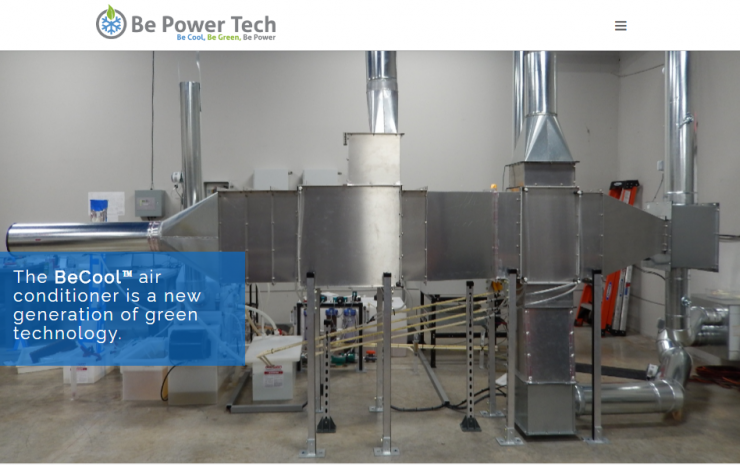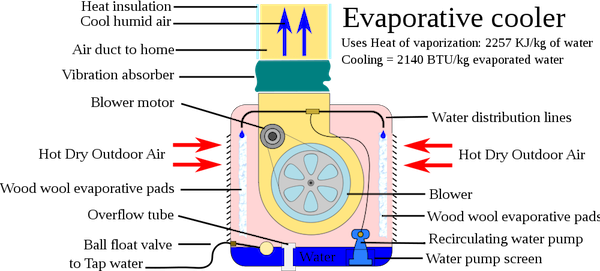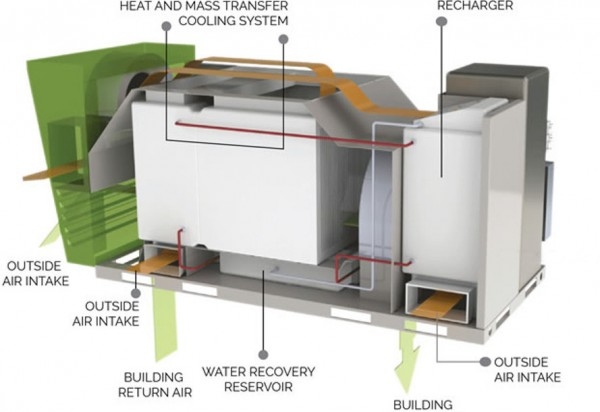Air conditioning can also generate electricity? American companies have new skills

In summer, with the exception of a handful of small partners who are uncomfortable with air-conditioning, the biggest obstacle that hinders us from enjoying a cool summer may be the bill for electricity. Although relatively old-fashioned air conditioners, the current frequency conversion technology can greatly reduce the air conditioning power consumption, but listening to the sound of the compressor can not help but make people hurt. Now, Be Power Tech from Florida, USA, has invented a brand-new air conditioner that not only consumes electricity but also generates electricity.
For conventional air conditioners, the cooling principle usually uses the principle of solid-liquid change of refrigerants such as Freon to generate heat exchange. First, the liquid Freon absorbs heat from the air in the evaporator and vaporizes it to cool the air. The cool air is then discharged into the room. The vaporized Freon is inhaled by the compressor. After being pressurized by the compressor, it is discharged into the condenser. The gaseous Freon eventually releases heat in the condenser and returns to liquid state to wait for the next refrigeration cycle. The heat released in the condenser is usually Fans are discharged outside. In the entire cooling process, the main purpose is to reduce the temperature by consuming electric energy and bringing the heat inside the room to the outside.

And Be Power Tech's air-conditioner refrigerator named BeCool completely broke the traditional air-conditioning thinking paradigm. BeCool does not need to insert electricity while working, instead uses the clean energy way of natural gas, uses the principle of evaporation of water to absorb the heat to refrigerate, has not only got rid of the freon that is harmful to the environment, uses the fuel cell at the same time to store the electricity produced by the chemical electrolysis of natural gas .
Its approximate working principle is shown in the figure below. The hot and dry air is sucked into the refrigerator from the left and right sides by a fan. The principle of water circulation evaporation and heat absorption takes away the heat from the air while increasing the moisture content of the dry air. Then the cool and moist air from the top The air outlet is sent into the room. Wherein the power of the fan and water circulation comes from the power of the chemical fuel cell, and the power of the fuel cell comes from the chemical electrolysis discharge of natural gas.

Evaporative cooling is not a completely new concept, but it has previously been limited by climatic conditions and can only be used in hot and dry places, not in hot and humid places. To that end, scientists at Be Power Tech have used a new, reusable desiccant to dry the moist hot air through a desiccant before performing the above cooling process. The key to the reuse of desiccants lies in the use of chemical fuel cells to generate heat.
Normal chemical fuel cells generate heat dissipation during power generation. Therefore, the chemical energy consumed is not 100% converted to electrical energy, and a considerable portion of it is actually wasted. This is perfectly utilized in BeCool chillers. Some were wasted energy in the past.
In the BeCool chiller, while natural gas is electrolyzed by a chemical fuel cell to generate electricity, heat dissipation is bound to occur, and Be Power Tech scientists intelligently use this heat dissipation in the heating of the desiccant, through the wet The desiccant heating method drains the moisture in the desiccant, which not only realizes the recycling of the desiccant, but also completes the chemical energy generation of the natural gas, and there is no energy waste at all. According to Be Power Tech, the use of natural gas for chemical energy in the BeCool chiller has reached 80%. What is even more crucial is that the remaining energy stored in the fuel cell can be completely transported to the building's power supply system to provide energy for electric devices such as lights and computers. (For comparison, nowadays in general car engines, up to 50% of the chemical energy of gasoline is wasted in the form of combustion heat dissipation, while the remaining 50% has about 20% of the energy used in various other automotive equipment. Energy supply, that is, less than 30% of the energy actually used for engine-driven vehicles

In summary, in fact, we can completely regard BeCool as a high-efficiency chemical energy generator that consumes natural gas. We use heat dissipation to make perfect use of the desiccant in the process of drying and at the same time using the generator. The electric energy drives the water-cooling cycle cooling, and finally can return the remaining electricity after cooling to the power supply network for users to use.
The size of BeCool is roughly equivalent to the size of common central air conditioners on the market. Apart from being able to bring cool air like central air conditioners, BeCool can help companies reduce a huge amount of electricity bill because after all natural gas charges are cheaper than electricity bills. Much more, but BeCool can also output part of the electricity to offset the daily electricity.
Be Power Tech plans to begin testing of practical scenarios in 2017, and if all goes well, it will enter the market in 2018.
Source: scientificamerican, bepowertech
